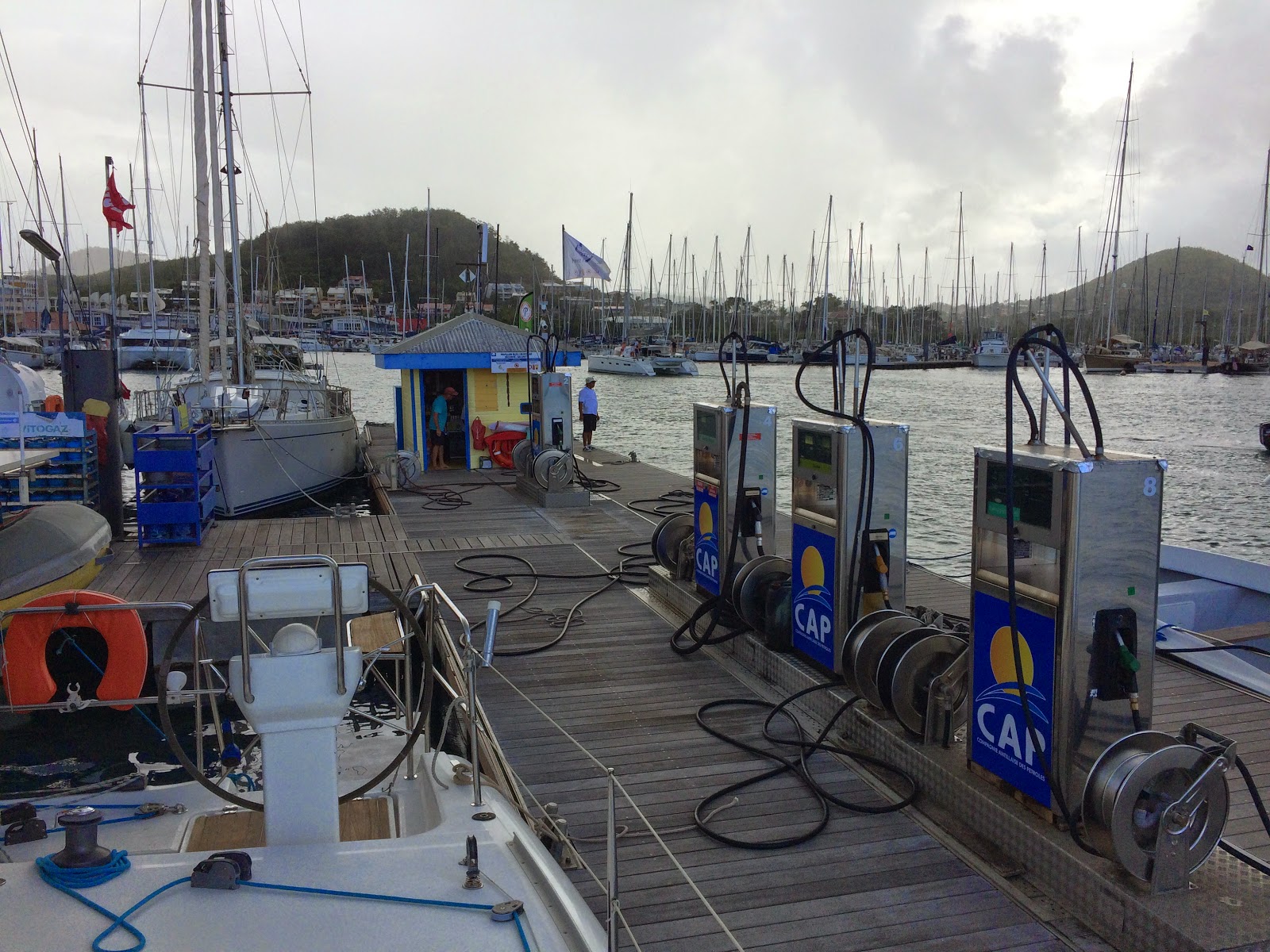Our first attempt at anchoring with our new boat was back in Le Marin, Martinique. Our anchor chain is rusty and a little corroded, which makes it difficult to glide smoothly out the anchor "track." Our inspection noted this and we knew it would need to be replaced eventually. However, in Le Marin, we anchored without difficulty.
Our boat is equipped with a windlass, an electric system which lowers and raises the anchor and chain with a press of a button or two. The 250 foot chain is thick and weighs a lot by itself, not counting the anchor, and pretty impossible to raise by hand. So it's really necessary to have the windlass.
When we arrived in Les Saintes, we tried two or three anchoring spots before we were confident that our anchor had dug in and was holding. Each time we tried anchoring, the anchor chain gave us problems. It came off the main gear, jumped the track, and spilled all 200 feet of chain out into the water, without our being able to stop it. It was a very frustrating couple of hours and there were swearing and tears (Kent swearing, my tears.) We were so happy that we finally anchored successfully because the sun was setting and it got dark quickly.
We enjoyed a nice BBQ fish supper on our stern deck, overlooking a 120 foot luxury yacht anchored a ways behind us.
Then, About 10:00pm, we noticed that big yacht was Getting closer behind us! Our anchor had dislodged and we'd drifted back. Our drift happened very quickly. As we scurried to start the engines and take up the anchor, we could see the yacht crew come to the bow. They watched us as we scrambled to raise the anchor and move forward.
We attempted to re-anchor several times. It was very dark with no moon, just stars for light. Each time we attempted to anchor, it jumped off the gear or simply dumped out entirely. And the anchor did not catch. Then, the worst happened. The chain had dumped and the windlass stopped working, meaning that we couldn't raise the anchor. We looked for a breaker and couldn't find it.
So, at midnight, after continuous attempts to anchor with Kent at the wheel and me on the windlass, we had a decision to make and it had to be fast. We backed out of the bay into a larger body of water with islands around, dragging our anchor on 200 feet of chain. In rough waters and in the dark, I took the wheel from Kent and he gathered his tools: a large bolt cutter and a hammer. We'd made the decision to cut the chain at the top. It was a very tense and difficult half hour. Finally, the chain loudly slid off our bow and we were free of our chain and anchor.
Our travails were not over. We turned the boat around and headed back into the harbor area. We had no anchor or chain, so we couldn't anchor anywhere. It was too dark to find the ferry dock or fuel dock, so we couldn't tie up. So, we circled around the harbor area in the open ferry way until 6am when we could finally see where we could go. We noticed a sailboat leaving her mooring ball in a nearby cove and we grabbed it.
In the end, we were safe, our boat was undamaged , and our little dog was no longer terrified. But we were exhausted! We took an extra day and slept a lot.
And we now have a brand new anchor and chain, with colored markings tracking depth, and we since learned where the breaker for the windlass is hidden. So all's well that ends well.











































